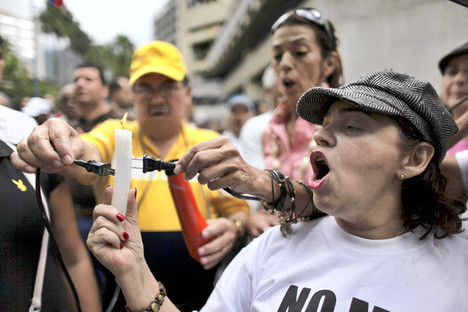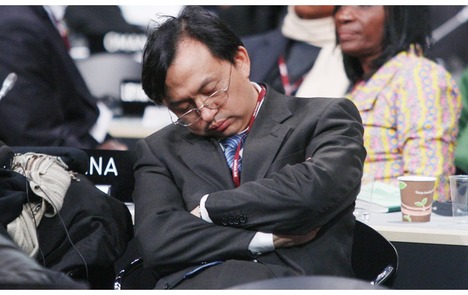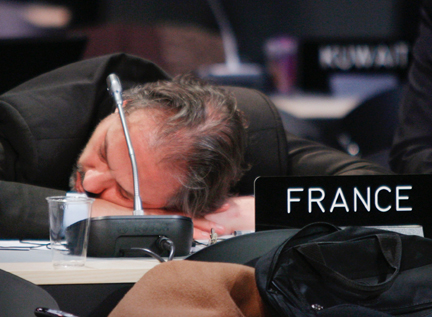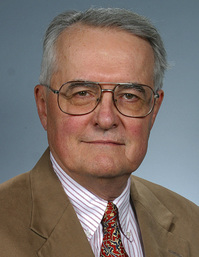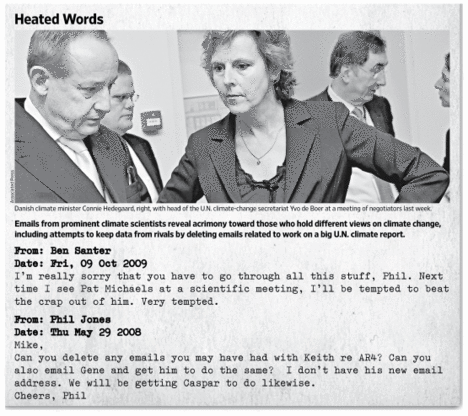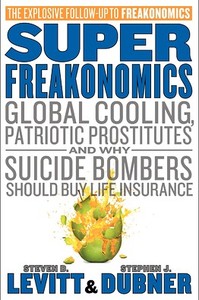(p. A25) When scientists make putative compendia of that literature, such as is done by the U.N. climate change panel every six years, the writers assume that the peer-reviewed literature is a true and unbiased sample of the state of climate science.
That can no longer be the case. The alliance of scientists at East Anglia, Penn State and the University Corporation for Atmospheric Research (in Boulder, Colo.) has done its best to bias it.
A refereed journal, Climate Research, published two particular papers that offended Michael Mann of Penn State and Tom Wigley of the University Corporation for Atmospheric Research. One of the papers, published in 2003 by Willie Soon and Sallie Baliunas (of the Harvard-Smithsonian Center for Astrophysics), was a meta-analysis of dozens of “paleoclimate” studies that extended back 1,000 years. They concluded that 20th-century temperatures could not confidently be considered to be warmer than those indicated at the beginning of the last millennium.
In fact, that period, known as the “Medieval Warm Period” (MWP), was generally considered warmer than the 20th century in climate textbooks and climate compendia, including those in the 1990s from the IPCC.
Then, in 1999, Mr. Mann published his famous “hockey stick” article in Geophysical Research Letters (GRL), which, through the magic of multivariate statistics and questionable data weighting, wiped out both the Medieval Warm Period and the subsequent “Little Ice Age” (a cold period from the late 16th century to the mid-19th century), leaving only the 20th-century warming as an anomaly of note.
Messrs. Mann and Wigley also didn’t like a paper I published in Climate Research in 2002. It said human activity was warming surface temperatures, and that this was consistent with the mathematical form (but not the size) of projections from computer models. Why? The magnitude of the warming in CRU’s own data was not as great as in the models, so therefore the models merely were a bit enthusiastic about the effects of atmospheric carbon dioxide.
Mr. Mann called upon his colleagues to try and put Climate Research out of business. “Perhaps we should encourage our colleagues in the climate research community to no longer submit to, or cite papers in, this journal,” he wrote in one of the emails. “We would also need to consider what we tell or request of our more reasonable colleagues who currently sit on the editorial board.”
After Messrs. Jones and Mann threatened a boycott of publications and reviews, half the editorial board of Climate Research resigned. People who didn’t toe Messrs. Wigley, Mann and Jones’s line began to experience increasing difficulty in publishing their results.
For the full commentary, see:
PATRICK J. MICHAELS. “OPINION; How to Manufacture a Climate Consensus; The East Anglia emails are just the tip of the iceberg.” The Wall Street Journal (Fri., DECEMBER 18, 2009): A25.
(Note: the online version of the article is dated DECEMBER 17, 2009.)

